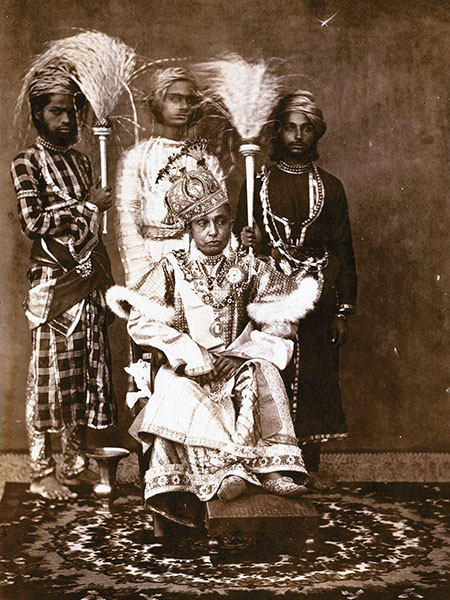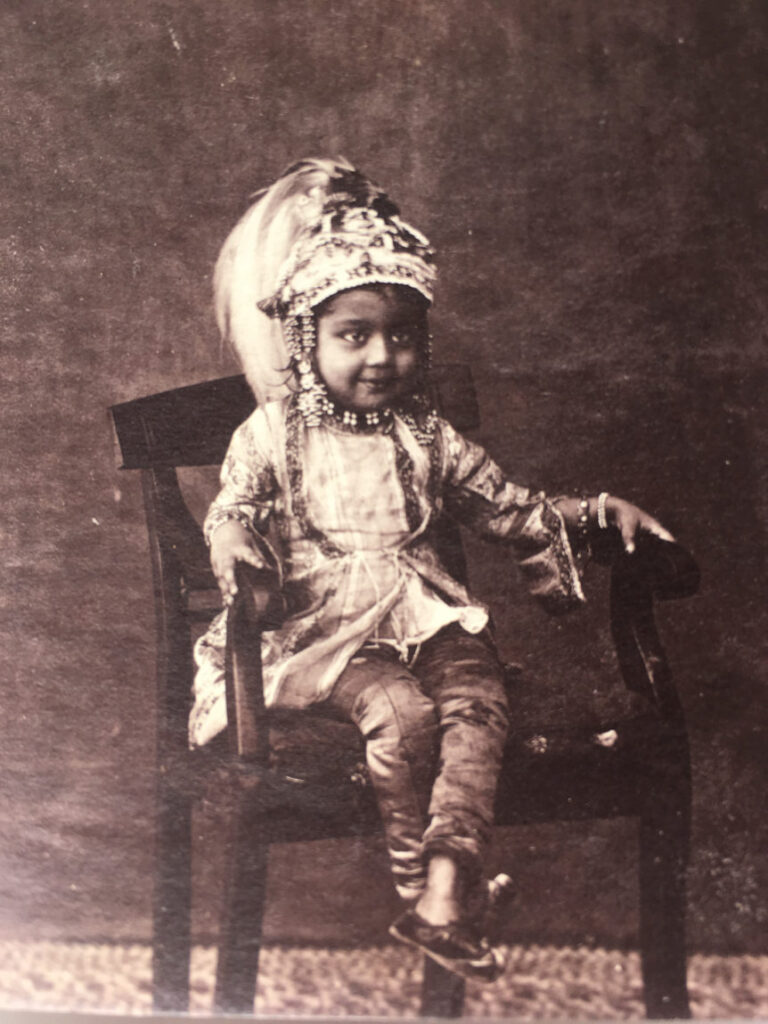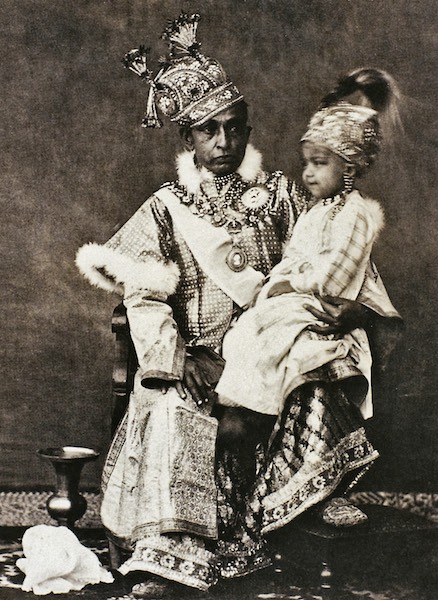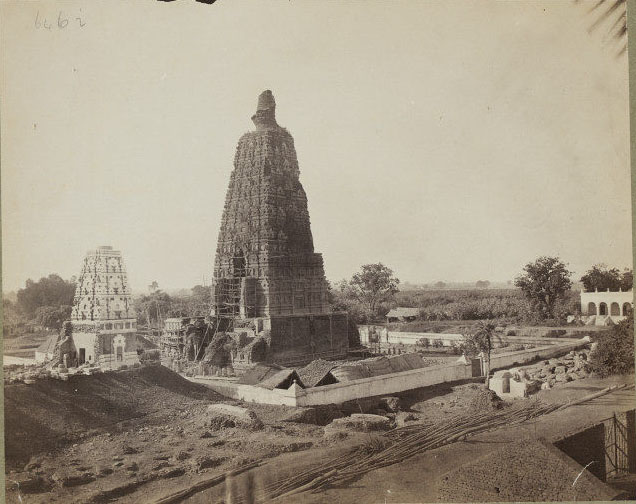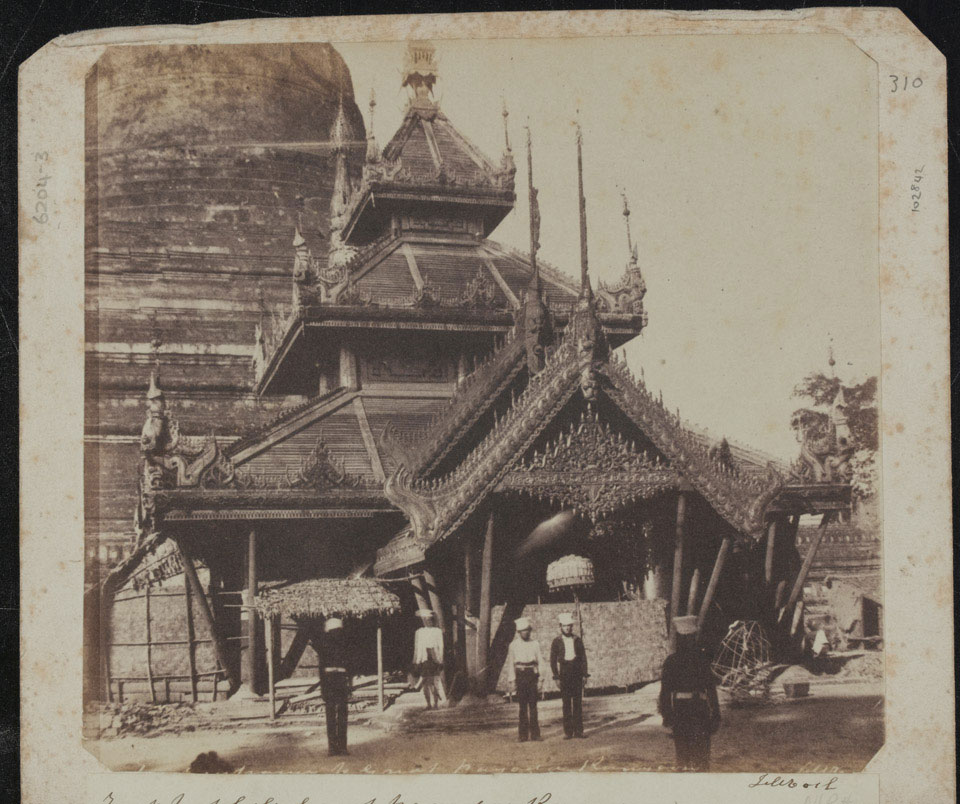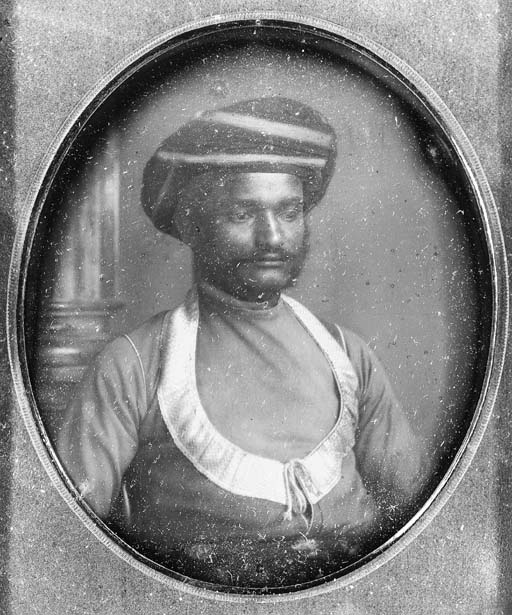James Waterhouse (1842-1922), was an officer in the Royal Artillery and a photographer. He was a president of the internationally know Photographic Department of the survey of India. He learned photography during his training in Addiscombe, near Croydon along with other subjects like mathematics, geology, chemistry, skills required for a military career in the Indian subcontinent.
He reached Calcutta in 1859, began his career as 2nd Lieutenant in the Royal (Bengal) Artillery. Waterhouse travelled to Saugor district in the Central provinces (Madhya Pradesh) under the order of Governor-General Lord Canning in 1861, to photograph ‘the tribes of Central India’.
He travelled Dhar, Jaora, Ratlam, and Bhopal, and documented not only the people of that region but also wrote extensively on the technomaterial complexity of his travels, supplies, and a fascinating account of the difficulties faced in the field.
James Waterhouse started with the Calotype and Waxed paper process, for which materials and chemicals were considerably cheaper and more convenient than Collodion Photography on the glass. In later period, Waterhouse decided to use Wet Plate Collodion due to sharpness and contrast it offered. He learned from his friend Boyce Edward Gowan (1839 -92) and quickly mastered the art of the wet plate Collidion process. He also developed technical and manipulative skills in the coating, exposure, and process of the glass plates.
Waterhouse recorded difficulties in using Wet Plate Collidion in the hot sun. The high temperature dried his Collodion plates before he could use them and often cracked his negatives. Due to high temperature (around 40°C) and lack of cooperation from the subjects, Waterhouse on average made four failed glass plates for one successful photograph. Waterhouse also written about the difficulties in photographing Indians. He had to take the same photographs nine times to make one good and satisfactory negative.
Chemical supplies were irregular, travelling was rough and rigorous, and the temperature was very high, to travel during the day time. Due to this gruelling travel plans his camera often broke-down, delaying the projects. In Bhopal he photographed Sikandar Begum of Bhopal. These photographs were published in The People of India (8 vols, 1868-75).
The logistic difficulties in obtaining reliable and regular supplies of chemicals led Waterhouse to investigate and master the valuable knowledge of photography chemistry. Waterhouse prepared his own albumenised paper, chemical solutions, nitrate of silver, and chloride gold.
James Waterhouse’s major contribution, apart from photographing people, monuments, and landscape of India, are his experiments with the medium. James Waterhouse introduced the toning of albumen prints with alkaline gold chloride solutions. The invention soon became a universal practice.
In nineteenth-century scientific work proves that many scientists, artists, and photographers were interested in photography and made significant contributions in formulating new photography processes, equipment and conservation techniques.
Albumen paper had the advantage of rendering more detail than the earlier matte salted papers, but it required more effective toning and fixation. Many early albumen prints, especially from the early and middle 1850s, show extensive fading and some are blacker in tone than later examples.
In 1855, it was recognized that silver photographs had poor archival permanence, and both the Photographic Society of London and the Societe francaise de photographie set up committees to investigate the fading of positive photographs.
Two French chemists and photography researchers Louis Alphonse Davanne (1824-1912) and Jules Girard, conducted a detailed and exhaustive scientific investigation of the process and published “Memoire analytique sur la formation, le fixage et l’alteration des epreuves positives en photographie [Analytic thesis on the formation, fixation, and alteration of positive photographic prints] in 1855. The research emphasized the importance of using fresh (sodium thiosulphate) fixer. Albumen prints however created new problems.
The thicker coating in prints was relatively impermeable, and proved difficult to completely wash out the chemicals. One of the favorite methods used in the early years for gold toning— sel d’or method of gold toning—mixed an acidic gold solution with the fixer, but often caused the decomposition of some of the fixer, which produced sulphur that could not be washed out. This was a major cause of print fading.
In the mid-1850’s new Gold toning method was practiced in which the toning step precedes the fixing step and no thiosulfate is included in the toning formula. This approach was favorable to the permanence of Albumen prints.
Later a new and much more effective method, called alkaline gold toning, was invented, practiced, and proposed by James Waterhouse. This method called for separate toning and fixing, and the main innovation was the use of a toning bath composed of gold chloride and one or two mild alkalies. The alkaline solutions were found to be much more effective in their toning action and made rich browns and purple-browns easily attainable on albumen paper. The use of different combinations of alkaline substances with gold chloride produced different effects in toning, and the number of different formulae for toners quickly multiplied. Many 19th-century manuals contain 10 to 15 different formulae; most of them were variations on the alkaline principle.
The invention of James Waterhouse’s alkaline gold-toning solutions overcame the difficulties and allowed for the enormous commercial and aesthetic development of albumen paper.
Reference
Louis Alphonse Davanne and Jules Girard, Recherches Théoretiques et Pratiques sur la Formation des Épreuves Photographiques Positives, Gauthier-Villars, Paris (1864), p. 3.
, “Memoire analytique sur la formation, le fixage et l’alteration des epreuves positives en photographie [Analytic thesis on the formation, fixation, and alteration of positive photographic prints],’’ Alphonse Davanne, and Jules Girard, Bulletin de la Societe francaise de photographie, vol. 1 (19 October 1855), 286-96.
Encyclopedia of nineteenth-century photography, Edited by John Hannavy, 2007
The Coming of Photography in India, Christopher Pinney, British Library, 2008
The Alkazi Collection of Photography: The Waterhouse Albums, edited by John Falconer, Mapin in association with the Alkazi Collection of Photography, 2009
https://cool.culturalheritage.org/albumen/library/monographs/reilly/chap8.html


